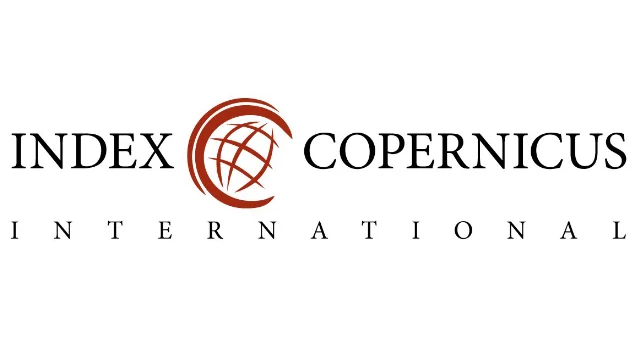Spiking Neural Networks (SNNs): A Path towards Brain-Inspired AI
DOI:
https://doi.org/10.4314/0hd1n838Keywords:
Spiking Neural Networks. Brain-Inspired AI, Neuromorphic Computing,.Event-Driven Processing. Edge ComputingAbstract
Spiking Neural Networks (SNNs) represent a significant step toward brain-inspired artificial intelligence by mimicking the temporal dynamics and energy efficiency of biological neurons. Unlike traditional artificial neural networks, SNNs process information through discrete spikes, enabling event-driven computation and efficient learning mechanisms. This paradigm shift enhances real-time processing, low-power consumption, and neuromorphic computing applications. With advancements in hardware and training algorithms, SNNs hold great promise for edge computing, robotics, and cognitive modelling. This paper explores the fundamental principles of SNNs, their advantages over conventional deep learning models, and the challenges in developing large-scale, efficient spiking architectures.
Downloads
Published
Issue
Section
Most read articles by the same author(s)
- Enefiok Archibong Etuk, Omankwu, Obinnaya Chinecherem Beloved, Human-AI Collaboration: Enhancing Decision-Making in Critical Sectors , Communication In Physical Sciences: Vol. 12 No. 2 (2025): VOLUME 12 ISSUE 2
Similar Articles
- Michael Oladipo Akinsanya, Aminath Bolaji Bello, Oluwafemi Clement Adeusi, A Comprehensive Review of Edge Computing Approaches for Secure and Efficient Data Processing in IoT Networks , Communication In Physical Sciences: Vol. 9 No. 4 (2023): VOLUME 9 ISSUE 4
- Olaleye Ibiyeye, Joy Nnenna Okolo, Samuel Adetayo Adeniji, A Comprehensive Evaluation of AI-Driven Data Science Models in Cybersecurity: Covering Intrusion Detection, Threat Analysis, Intelligent Automation, and Adaptive Decision-Making Systems , Communication In Physical Sciences: Vol. 8 No. 4 (2022): VOLUME 8 ISSUE 4
- Ademilola Olowofela Adeleye, Oluwafemi Clement Adeusi, Aminath Bolaji Bello, Israel Ayooluwa Agbo-Adediran, Intelligent Machine Learning Approaches for Data-Driven Cybersecurity and Advanced Protection , Communication In Physical Sciences: Vol. 7 No. 4 (2021): VOLUME 7 ISSUE 4
- 1. Anthony I. G. Ekedegwa, Evans Ashiegwuike, Abdullahi Mohammed S. B, Seasonal Short-Term Load Forecasting (STLF) using combined Social Spider Optimisation (SSO) and African Vulture Optimisation Algorithm (AVOA) in Artificial Neural Networks (ANN) , Communication In Physical Sciences: Vol. 12 No. 3 (2025): VOLUME 12 ISSUE 3
- David Adetunji Ademilua, Cloud Security in the Era of Big Data and IoT: A Review of Emerging Risks and Protective Technologies , Communication In Physical Sciences: Vol. 7 No. 4 (2021): VOLUME 7 ISSUE 4
- Precious Ogechi Ufomba, Ogochukwu Susan Ndibe, IoT and Network Security: Researching Network Intrusion and Security Challenges in Smart Devices , Communication In Physical Sciences: Vol. 9 No. 4 (2023): VOLUME 9 ISSUE 4
- Abubakar Tahiru, Oluwasanmi M. Odeniran, Shardrack Amoako, Developing Artificial Intelligence-Powered Circular Bioeconomy Models That Transform Forestry Residues into High-Value Materials and Renewable Energy Solutions , Communication In Physical Sciences: Vol. 8 No. 4 (2022): VOLUME 8 ISSUE 4
- Ayomide Ayomikun Ajiboye, Investigating the Role of Machine Learning Algorithms in Customer Segmentation , Communication In Physical Sciences: Vol. 12 No. 2 (2025): VOLUME 12 ISSUE 2
- Florence Omada Ocheme, Hakeem Adewale Sulaimon, Adamu Abubakar Isah, A Deep Neural Network Approach for Cancer Types Classification Using Gene Selection , Communication In Physical Sciences: Vol. 7 No. 4 (2021): VOLUME 7 ISSUE 4
- David Adetunji Ademilua, Advances and Emerging Trends in Cloud Computing: A Comprehensive Review of Technologies, Architectures, and Applications , Communication In Physical Sciences: Vol. 10 No. 3 (2023): VOLUME 10 ISSUE 3 (2023-2024)
You may also start an advanced similarity search for this article.




